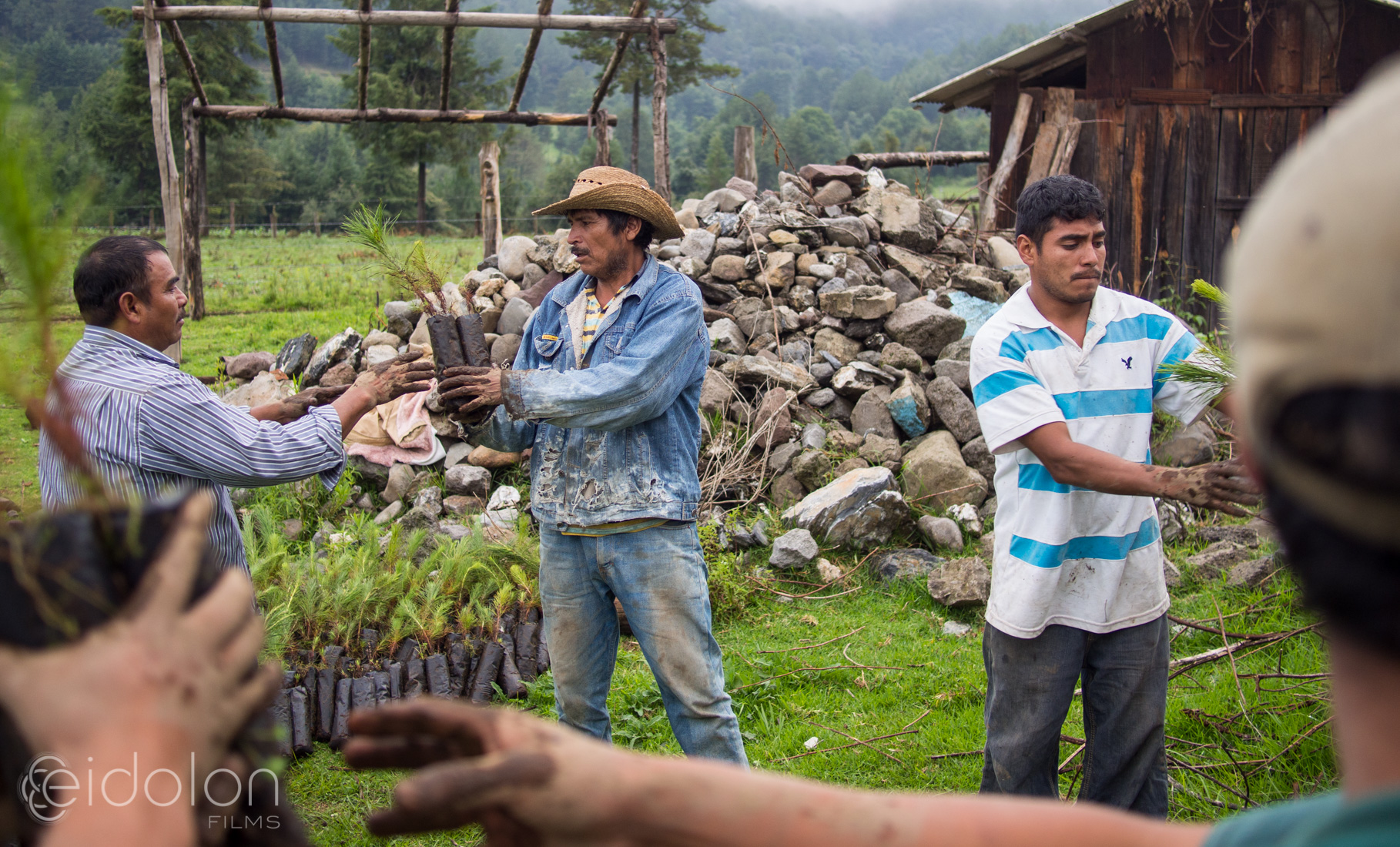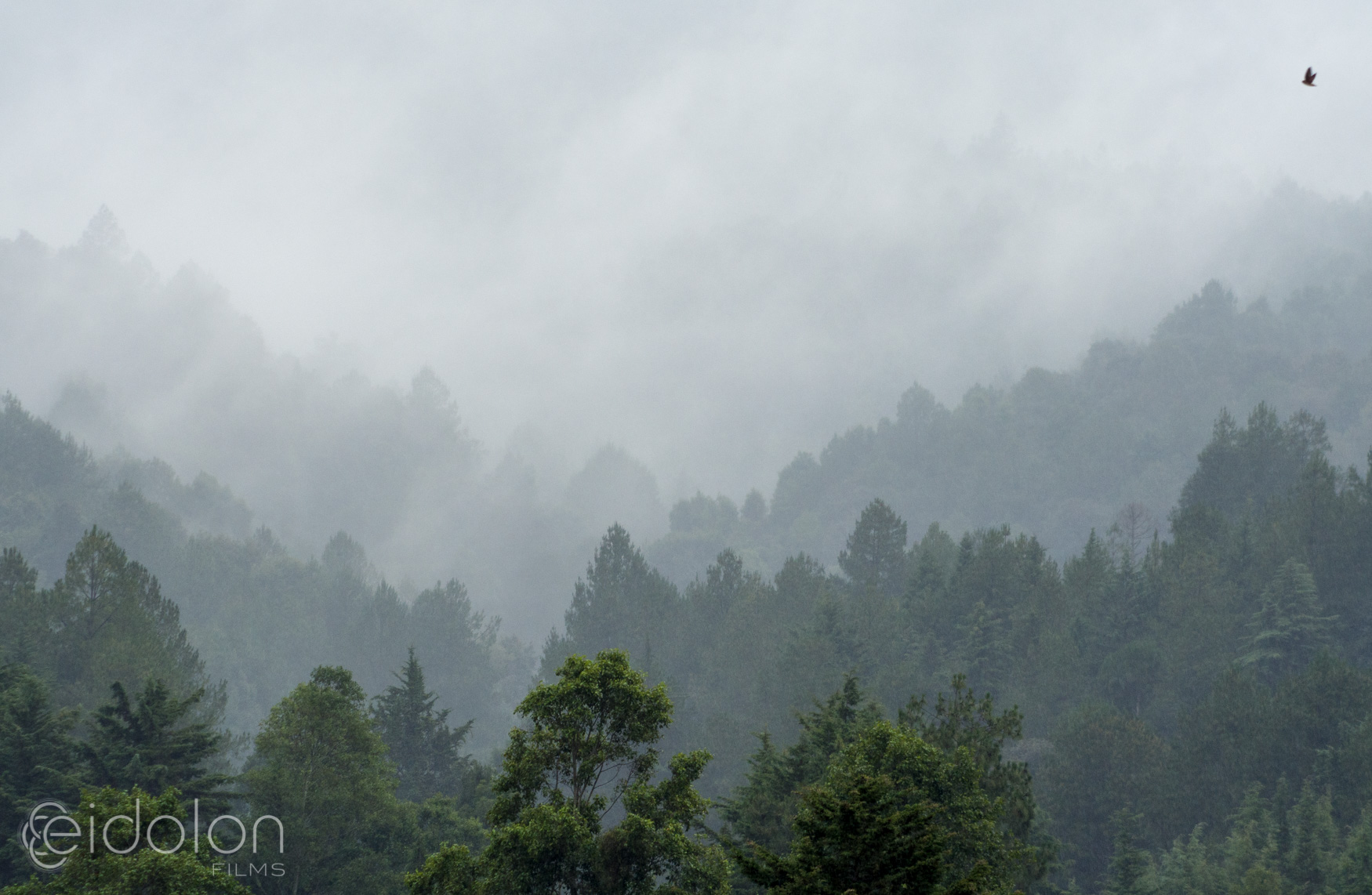It’s a misty June morning in the mountains of Michoacan, Mexico. A group of men, women and children from the indigenous community of Donaciano Ojeda gather by a veritable mountain of pine saplings, wooden boxes in hand. Tree-carpeted mountains loom behind them, hued more blue than green due to the cast of rain clouds. It was only just yesterday that they’d been given word that reforestation would start at 7am. So they’ve dropped everything to plant up to 60,000 pine and oyamel trees to regrow destroyed areas of the forest. Donaciano Ojeda is one of many indigenous communities living in the Monarch Butterfly Biosphere Reserve, a 56,000 hectare protected area created by the government of Mexico to preserve the overwintering sites of the threatened monarch butterfly, which makes a dramatic migration from Canada to this forest each year. Reaching a record high 20 years ago, monarchs numbered nearly a billion, but they’ve been declining steadily since, plunging by 50% in the last year alone. Only 30 million butterflies remain. Scientists attribute their decline to several factors, including deforestation in Mexico and widespread milkweed destruction throughout the US. Milkweed is the sole food source for the monarch larvae, so its rapid disappearance represents a significant threat to monarch survival. Since the creation of the reserve in Mexico, the community of Donaciano Ojeda has served as a guardian of the forest. In addition to participating in reforestation, they volunteer to patrol the forest for illegal loggers. 365 days a year, 24 hours a day, a different group of men volunteers for “las vigilancias” (the guardianship). Conservation is now a way of life in Donaciano Ojeda, but it wasn’t always that way. The community once logged the forest to support their families, but with the creation of the reserve, they’ve taken up the protection of the forest. It’s a decision that has profound effects. Absent logging income, the community struggles to create a sustainable life. Many men have needed to migrate to Mexico City for temporary work, disrupting their family’s traditional way of life. The balance between self-sustainability and a life centered on conservation has yet to be realized. This story of sacrifice inspired us to begin producing our feature documentary titled “The Guardians”. The film artfully parallels the lives of the monarchs and the community to answer the question: can humans and nature can co-exist without one having to suffer at the expense of the other?
“Plant these trees with as much care and attention as you would your own avocado trees,” community leader Luis instructs the group as they briskly load their boxes with saplings and strap them to donkeys to carry down the steep slopes. It’s a quiet endeavor; only the morning call of birds, the creaking of trees in the wind, the rush of a brook below, and the crunch of shovels fill the air as the community digs holes for the new trees. Three generations work earnestly beside each other. “We are only passing through life, and who will be the owners of the forest?” asks Aristeo. He spends his days proudly weeding, watering and watching over the saplings. Pines are his favorite, but the oyamels are for the monarch butterflies. When in Mexico, the monarchs cling in clumps to the warmth of the oyamel bark as they hibernate, waking up only briefly to search for water. Like the monarchs, the community of Donaciano Ojeda depends of the forest. It gives them clean air to breathe and water to nourish their crops. This motivates their actions and commitment to protecting their environment. “What we plant is for the lungs of the world,” Aristeo says, his philosophical thoughts on conservation befitting of his name.
Witnessing reforestation that misty morning stuck with me when we returned to our home in Washington, DC. Unlike the misty cool air of June in central Mexico, summers in DC are hot. Temperatures regularly hit the nineties with 80% humidity. It’s this time of year when I love and appreciate trees most. Our city’s thick tree canopy shades sidewalks and cools my walk home from work. And in these moments, I feel a momentary connection with nature that city living rarely provides. Like many urbanites, I have lost an immediate connection with the environment. Any of my actions that may negatively affect the environment feel distant. As a result, my conservation efforts are less sacrifice than they are modes of convenience. The recycling truck comes every week, so why not separate paper and bottles from the rest of the trash? It’s easy and I can give myself a nice pat on the back. But I’ve never had to make a big sacrifice in my life for the benefit of the planet. Not like those living Donaciano Ojeda, who’ve given up so much for the rest of us.
It will take years for the oyamel and pine trees hand-planted that misty June morning to grow to the height they once were. Aristeo will continue to weed and water more saplings, “las vigilancias” will continue, and the community will grow avocados and corn. Meanwhile, the threat to their survival will continue to loom. This November 2nd, Dia de los Muertos, the monarchs are expected to arrive in Mexico once again. They’ll fly right through Donaciano Ojeda, the community celebrating the butterflies as the returning souls of their deceased. Scientists are hopeful the monarchs will return in slightly larger numbers from last year’s record low, but they face a perilous journey. A proliferation of Roundup-Ready crops and more and more American grassland dedicated to industrial agriculture has nearly wiped out milkweed. Our film “The Guardians” reminds us of the interconnectedness of human and nature, the sacrifices we must take to strike a balance, and the heroes who are already making them.



